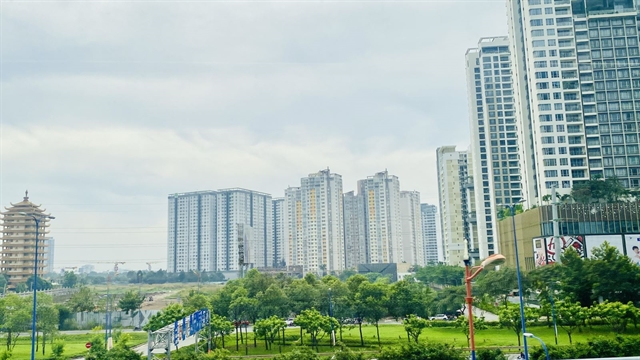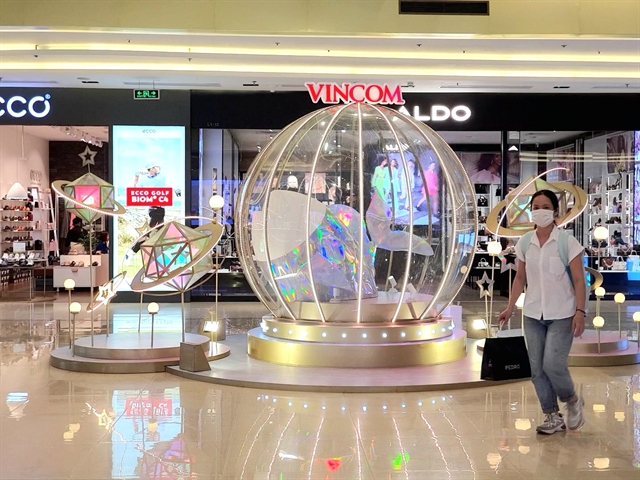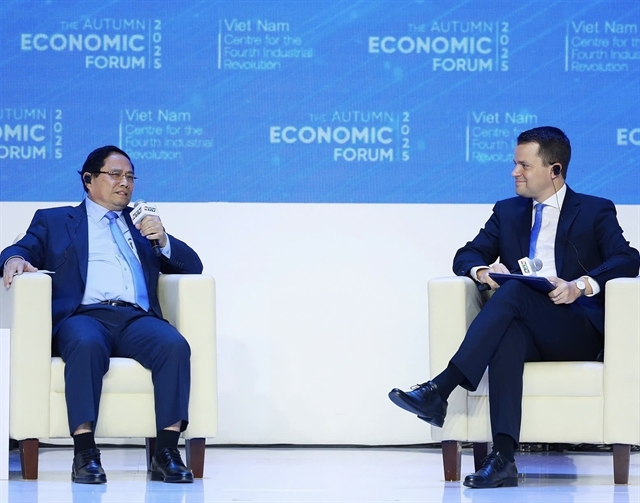 Economy
Economy

 |
| Parkson Saigontourist Plaza in District 1, HCM City. Photo courtesy of Parkson |
Compiled by Ly Ly Cao
HÀ NỘI — Việt Nam is considered an appealing market for domestic and foreign retailers thanks to its stable socioeconomic and young and large population, with the fast growth of the middle class. Therefore, the collapse of Parkson Vietnam is most likely attributable to its inappropriate business strategy.
After 18 years of operation and expansion, Parkson Retail Asia said that it would depart Việt Nam due to business losses, according to a filing submitted to the Singapore Stock Exchange.
Parkson Vietnam filed for bankruptcy on April 28 with the court in HCM City.
Tan Sri William Cheng, CEO of Parkson Retail Asia, said that previously, Parkson Vietnam had a history of operating at a loss for many years, while the pandemic created an additional challenging business environment. Rising costs and the appearance of many competitors made it not possible for the company to operate here.
Parkson landed in Việt Nam in 2005 and developed a chain of high-end shopping centres in big cities including HCM City, Hà Nội and Hải Phòng. It also opened several stores in Indonesia and Myanmar, however, they were eventually shuttered.
It witnessed outstanding success during 2005-2010, with the Vietnamese market continuing to contribute favourably to the Malaysian retail group's sales and profit in its 2009 annual report.
However, since 2011, the department store-oriented business model has begun to show certain flaws, particularly when a new type of shopping complex with many activities ranging from shopping to entertainment developed.
Parkson had to shut four department stores in Việt Nam in 2018.
Experts say that the behaviour, habits, capabilities, and consumption preferences of customers vary by location. And this strongly affects the operation of department stores, which adhere to fixed principles that are difficult to change.
Parkson itself has acknowledged the need to innovate in all aspects to adapt to Việt Nam's competitive retail market.
In the first half of 2019, it was aimed to be a destination that integrated shopping, dining, and entertainment — an all-in-one destination, serving a wide range of customers.
However, the decision to change is obviously unable to save Parkson from collapse because the retail market’s pie is getting smaller and smaller.
Vietnamese firms have remained essential players in the shopping centre industry over the years, owing to better access to land sources and good sites in big cities and urban areas.
 |
| A customer passes by a logo of Vincom inside its building in Trần Duy Hưng Street, Hà Nội. VNS Photo Ly Ly Cao |
With 83 retail complexes in 44 provinces and cities, Vincom Retail has the greatest market share. It is also the only investor with three new shopping centres opening in 2022, with an occupancy rate of more than 94 per cent.
In the first quarter of 2023, Vincom Retail posted a record net profit of up to VNĐ1.02 trillion (US$43.6 million), up 171.2 per cent year-on-year.
Moreover, foreign investors see strong growth in the Vietnamese retail market after the Government allowed the establishment of retail units with 100 per cent foreign capital, such as Central Retail, Aeon, or Lotte.
Except for Parkson, other foreign retailers are still expanding thanks to their own business strategies.
Aeon plans to nearly triple its size to 16 shopping malls across the country by 2025, focusing on attracting middle-class customers, which are growing rapidly. It is now present in HCM City, Hà Nội, Hải Phòng and Bình Dương.
Particularly, the recent shopping centres of Japanese corporations are built in large areas, typically Aeon The Nine (Hà Nội) with an area of 1,200 square metres, four times larger than normal supermarkets in Việt Nam. Or Aeon Mall Huế has just started construction on a total area of 8.62 hectares.
Meanwhile, Lotte is about to open Lotte Mart Tây Hồ, located on a 7.3-hectare lot in Hà Nội. With a total investment of more than $600 million, this is considered one of the most expensive shopping mall projects in the capital.
In addition, the Korean giant also owns 15 supermarkets and Lotte Mart shopping centres with areas ranging from thousands to tens of thousands of square metres.
But the foreign investor owning the largest market share in the Vietnamese retail industry is Central Retail.
For the shopping mall segment, the Thai business has opened 39 locations under the Go! brand, providing 213,000 square metres of floor space for more than 900 shops across the country.
The group also announced in mid-February that it would invest 50 billion baht ($1.45 billion) in Việt Nam during 2023-2027 to accelerate its presence in the market, after pouring more than 10 billion baht into Viet Nam in the previous ten years.
This suggests the failure of Parkson in Việt Nam is inevitable due to an inappropriate strategy in assessing and approaching the market. And the Vietnamese retail market is still attractive to both local and foreign investors.
Statistics from the General Statistics Office of Vietnam showed that the total retail sales of consumer goods and services were projected at VNĐ510.7 trillion in April, a gain of 3.7 per cent over the previous month and 11.5 per cent over last year.
For the first four months of this year, the total retail sales of consumer goods and services were estimated at over VNĐ2 quadrillion, up 12.8 per cent year-on-year. — VNS




